|
Getting your Trinity Audio player ready...
|
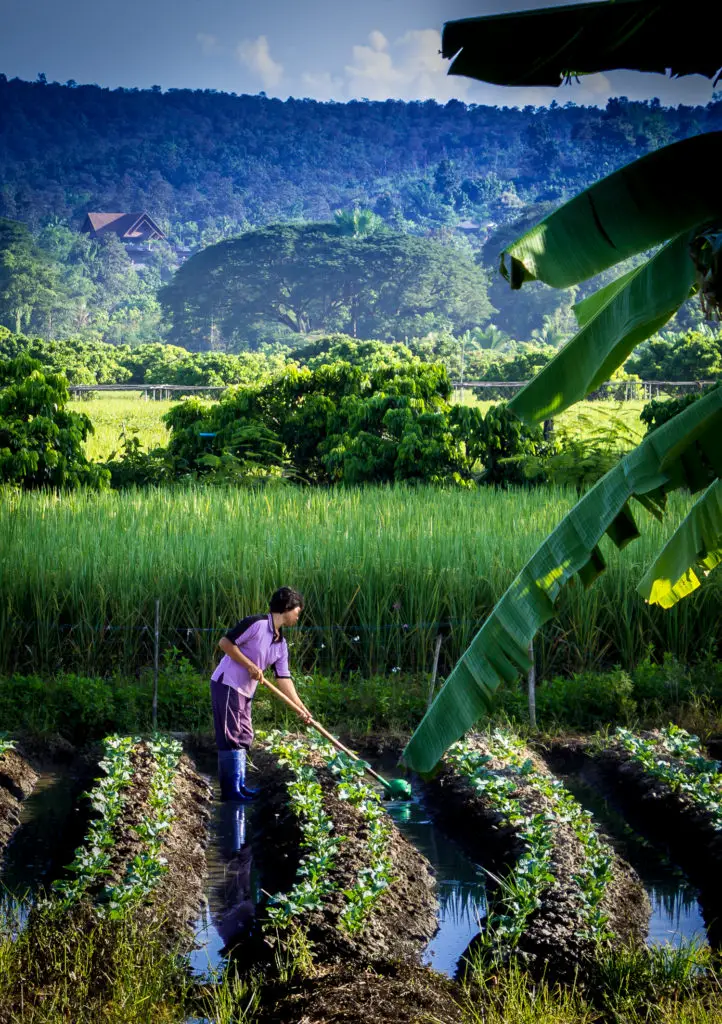
When the Southwest Monsoon winds subside and the rains lessen, Northern villages in Thailand are bustling with life. The waters are still strong, but begin to quieten as the land is fully fed. September is closing and the Monsoon season is amost over as the rains lessen. But the colours still sparkle, vibrant in the hedgerows and the landscape glows in rich profusion. Thick, bursting with the energy brought by the rains and the sun. Rivers running free cut through wild vegetation that gorges itself on an abundance of nature’s tears. Vying for its rightful place alongside man’s crops.
The Southwest Monsoon in Northern Thailand
The Southwest Monsoon in Northern Thailand is the most beautiful time of year. The Monsoon winds herald the arrival of life-giving rain which we have not seen for the best part of six months. It washes the dust from the skies and our houses. And the hedgerows, fields and riverbanks come alive once more.
The north Indian Ocean becomes the warmest area of the world oceans prior to the onset of southwest monsoon in June.
Advancing Earth and Space Science
What are Monsoon winds?
As June approaches Northern Thailand awaits the arrival of the Southwest Monsoon from the Indian Ocean. The seasonal monsoon winds blow from the Southwest bringing heavy rain with them. The reservoirs are shallow and the water-table is low. Both are in need of a big drink after months of dry weather, starting in December.
What is Monsoon season?
The monsoon of South Asia is among several geographically distributed global monsoons. It affects the Indian subcontinent, where it is one of the oldest and most anticipated weather phenomena and an economically important pattern every year from June through September, but it is only partly understood and notoriously difficult to predict. Several theories have been proposed to explain the origin, process, strength, variability, distribution, and general vagaries of the monsoon, but understanding and predictability are still evolving.
The unique geographical features of the Indian subcontinent, along with associated atmospheric, oceanic, and geophysical factors, influence the behavior of the monsoon. Because of its effect on agriculture, on flora and fauna, and on the climates of nations such as Bangladesh, Bhutan, India, Nepal, Pakistan, and Sri Lanka – among other economic, social, and environmental effects – the monsoon is one of the most anticipated, tracked, and studied weather phenomena in the region. It has a significant effect on the overall well-being of residents and has even been dubbed the “real finance minister of India”.
Wikipedia
Nature wakes up

The spider lays out her welcome mat for unsuspecting visitors. And the forest teems with life, cackling away in the myriad languages of nature. The Northern rural villages in Thailand harvested the lamyai fruit in August. Now the farmers have pruned and fed the trees and cleaned the ground in the hope of more next year. This year the crop was average. The beauty of nature is that you never know what it will bring. Big or small, as long as disease and pestilence keep their distance, we accept whatever is provided and are grateful for it.
Her larder watered by the Southwest Monsoon
Farmers are sending the last of the cauliflowers off to market. Papaya trees are exhausted by their daily duty, giving birth to countless offspring and ever more fruit. They take a well-earned rest. The dazzling clarity of the early morning light slices through the leaves and branches, turning muddy fish ponds into shimmering mirrors.
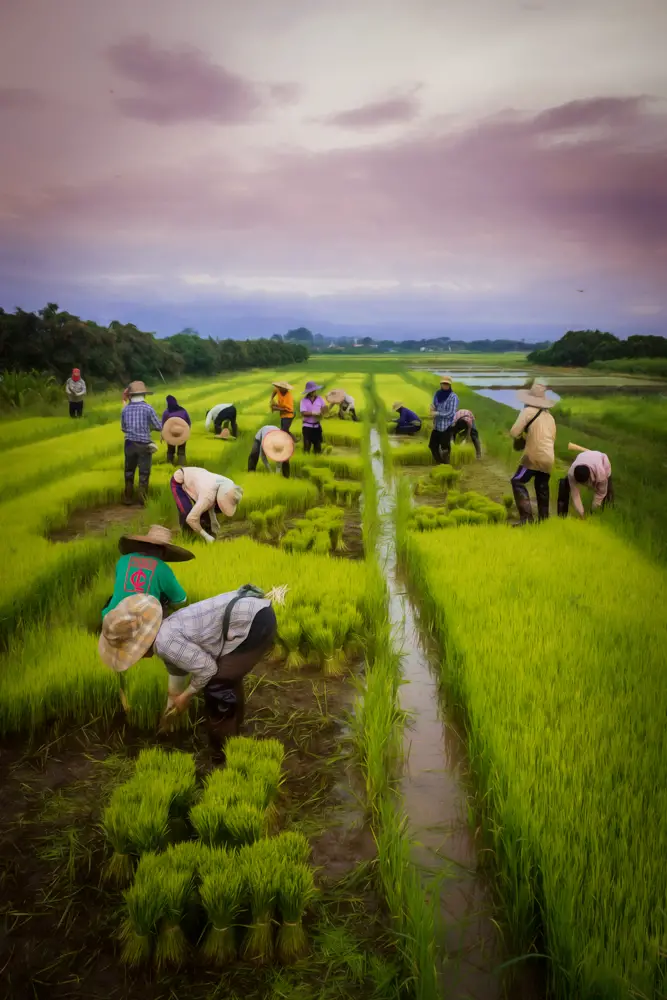
Coconut trees have had their fill of the abundant waters they adore. Their nuts are bursting with the best hydrating juice nature can provide. Banana trees reach skywards, showering us with delicious offerings in many varieties.
Cha-om, cienda, phrik (chilli), garlic, kapow and the variety of spinach, pag boong (wild), pag gad, pag kom and pag ban are growing well. They are some of the vital vegetables and herbs needed to sustain us. Apart from a little care, nature gives us these free gifts. The lemon trees are heavy and overstocked with the hard dark green fruit of the orient.
Rice ears are bursting in the paddies
The rice is calling to be cut. It is the first crop of staple food, that will feed us for six months before the second harvest.
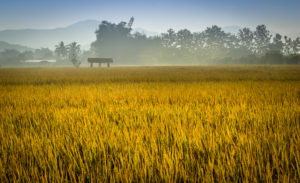
Rai upon rai of ripening ears wave at me in the gentle cool early morning breeze. I can feel the chill from Siberia and China in the North. Fields of gold are brilliantly illuminated by the rising sun bursting through the morning mist. The clarity of the colours, the shadows and the reflections in the water tie the magic kaleidoscope together. The most exquisite time of year is nearly over.


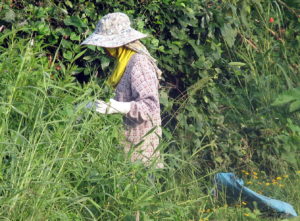
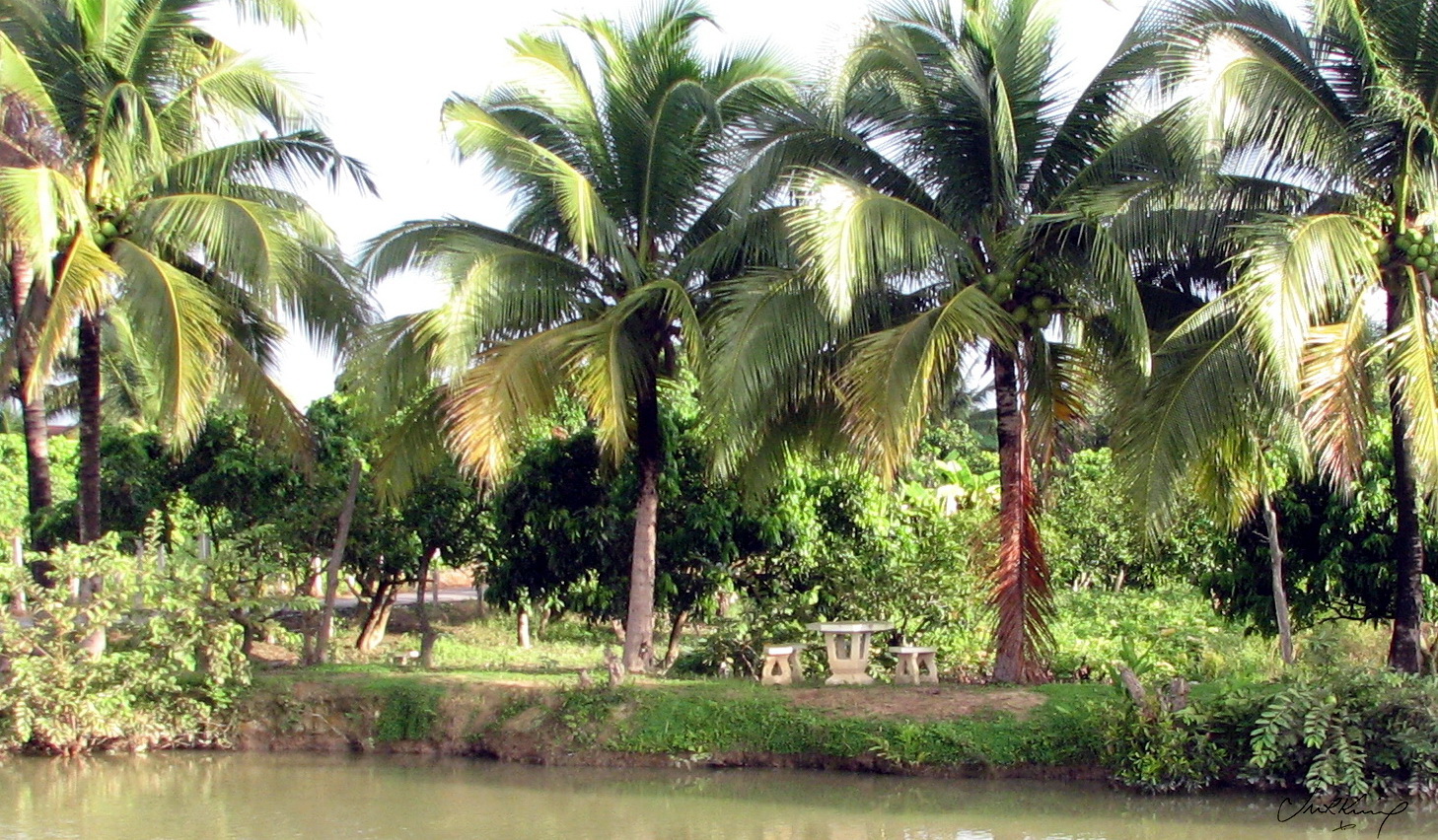
Hi Patrick. Thanks for visiting Jamoroki and I am glad you are enjoying it. I’m sure Catholic schooling in the old days sent many boys to sea!!! See you soon again. Regards James
Jim I enjoy you 15weeks series full on! Keep up the great work! I share a similar catholic school upbringing and am a semi retired sea Captain spending about half the year in Thailand.